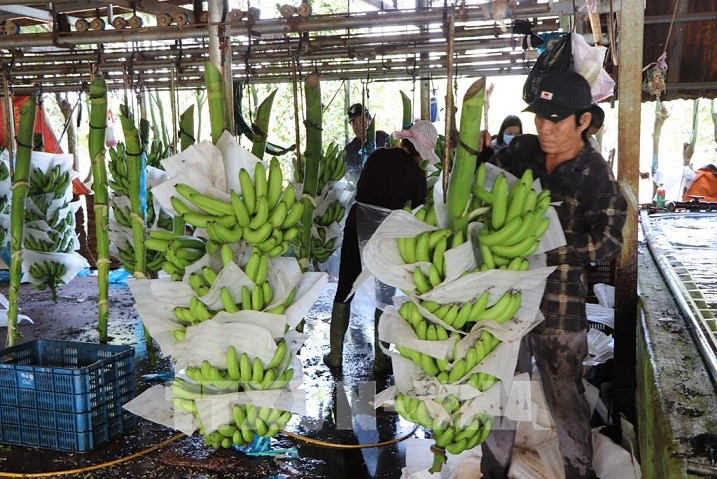
China has always been a major market for Vietnamese exports. However, many local firms still do not fully understand the Chinese market, leading to some difficulties when exporting products to conquer the world's most populous market.
Referring to the country’s strengths when bringing goods to the Chinese market, Nong Duc Lai, trade counselor of the Vietnamese Embassy in China, said that China is currently the second largest export market and the most important export market for a number of Vietnamese agricultural products. Indeed, it is the largest export market for fruit and vegetables, cassava and products from cassava, rubber, whilst being the third largest export market with group of aquatic products, only behind the United States and Japan.
Some groups of products such as seafood, fruits, and coffee from the nation are among the top 10 largest exporters to China, while items such as pangasius (Tra fish), squid, dragon fruit, lychee, and cashew nuts all account for an almost absolute market share in terms of volume, as well as import turnover.
This indicates that many local products and industries boast strengths when being exported to the Chinese market.
Vietnamese competent agencies are therefore in the process of accelerating negotiations with China as they seek a way to open the market to many of strong Vietnamese products, thereby creating more favourable conditions for goods. This can especially be seen in agricultural and aquatic products attempting to penetrate the market of over 1.4 billion people.
According to Lai, in addition to the strength of a number of commodity groups, Vietnam can promote advantages through diverse modes of transport from road, sea, rail to air in a short time. Indeed, it enjoys competitive costs compared to many other countries in the region and throughout the world thanks to sharing both land and sea borders with China.
Furthermore, with the diversification of the structure of export products, Vietnamese enterprises are becoming increasingly knowledgeable about the market and the needs of Chinese consumers.
Moving forward, China may relax its "Zero COVID-19" policy, thereby initiating a strong recovery of the domestic consumer market towards the end of the year. This therefore represents an opportunity for Vietnam to spur exports to this market.
Lai went on to emphasise that the trend of raising standards for imported goods, especially for Chinese agricultural products and food, is irreversible. As a result, the control and prevention of COVID-19 on frozen and fresh goods will continue to be maintained.
Competition for goods, especially agricultural products of the same type, among countries exporting to the Chinese market is therefore becoming increasingly fierce. Due to this, exporters and producers are required to adapt themselves to regulations in terms of quality standards, testing and quarantine, packaging, traceability of importing countries, while constantly seeking to improve quality, designs, and product packaging in order to be competitive in the Chinese market.
As the trade representative agency of Vietnam in China, the Vietnam Trade Office in Beijing and its trade branches and trade promotion offices based in different regions regularly launch a range of activities aimed at helping Vietnamese enterprises to approach and exploit the Chinese market in different ways.
Before the outbreak of the COVID-19 pandemic, the Vietnam Trade Office in China regularly co-ordinated to arrange many business delegations to visit China to survey the market, trade with businesses and industry associations in the host country, and attend major international fairs held in the northern neighbour.
The trade office and the representative agency always seeks to ensure and protect the interests of enterprises conducting business in the area within the framework of the law and the permitted scope of authority.
Regarding trade promotion schemes expected to be carried out in China in the future, Lai stated that until the end of the year, apart from co-ordinating with units of the Ministry of Industry and Trade to facilitate Vietnamese enterprises’ participation in some fairs, the Trade Office will launch a range of activities. This will include introducing the export potential of fruits, agricultural products, and the local food and agricultural industry in some localities.
Moreover, the Trade Office will continue to co-ordinate with units of the Ministry of Industry and Trade, localities and industry associations as it seeks to launch trade activities that connect Vietnamese businesses with local partners and importers and vice versa.
Source: VOV